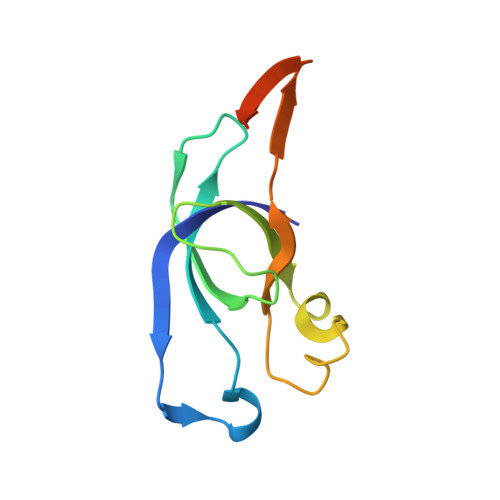Structure of a Syntheticbeta-Carboxysome Shell.
Sutter, M., Laughlin, T.G., Sloan, N.B., Serwas, D., Davies, K.M., Kerfeld, C.A.(2019) Plant Physiol 181: 1050-1058
- PubMed: 31501298
- DOI: https://doi.org/10.1104/pp.19.00885
- Primary Citation of Related Structures:
6OWF, 6OWG - PubMed Abstract:
Carboxysomes are capsid-like, CO 2 -fixing organelles that are present in all cyanobacteria and some chemoautotrophs and that substantially contribute to global primary production. They are composed of a selectively permeable protein shell that encapsulates Rubisco, the principal CO 2 -fixing enzyme, and carbonic anhydrase. As the centerpiece of the carbon-concentrating mechanism, by packaging enzymes that collectively enhance catalysis, the carboxysome shell enables the generation of a locally elevated concentration of substrate CO 2 and the prevention of CO 2 escape. A functional carboxysome consisting of an intact shell and cargo is essential for cyanobacterial growth under ambient CO 2 concentrations. Using cryo-electron microscopy, we have determined the structure of a recombinantly produced simplified β-carboxysome shell. The structure reveals the sidedness and the specific interactions between the carboxysome shell proteins. The model provides insight into the structural basis of selective permeability of the carboxysome shell and can be used to design modifications to investigate the mechanisms of cargo encapsulation and other physiochemical properties such as permeability. Notably, the permeability properties are of great interest for modeling and evaluating this carbon-concentrating mechanism in metabolic engineering. Moreover, we find striking similarity between the carboxysome shell and the structurally characterized, evolutionarily distant metabolosome shell, implying universal architectural principles for bacterial microcompartment shells.
Organizational Affiliation:
Environmental Genomics and Systems Division, Lawrence Berkeley National Laboratory, Berkeley, California 94720.















